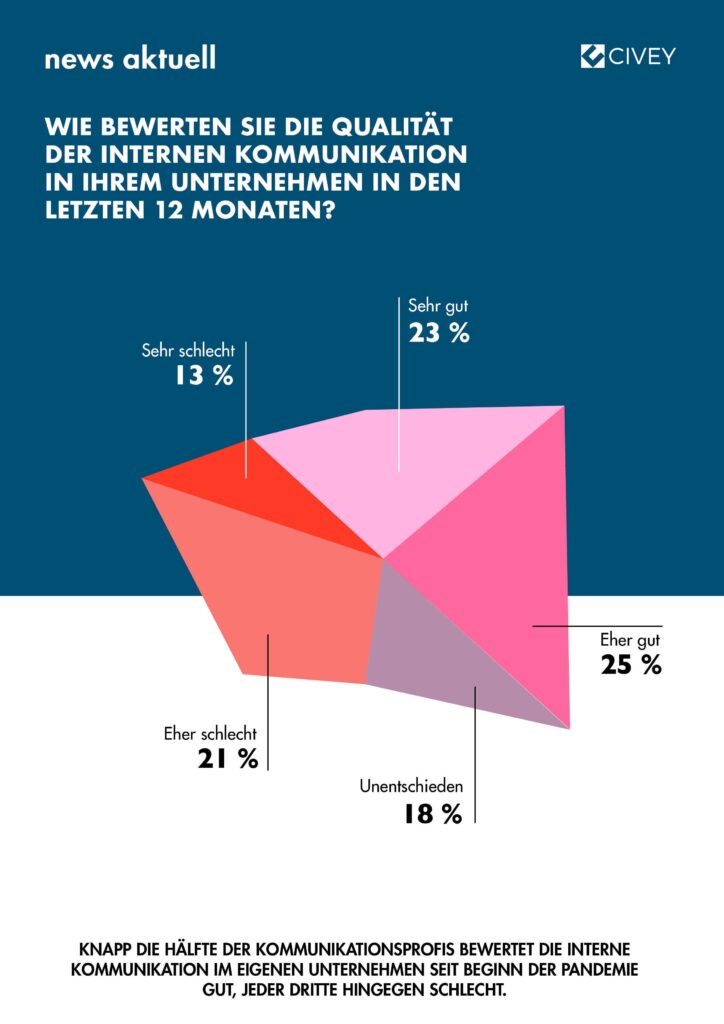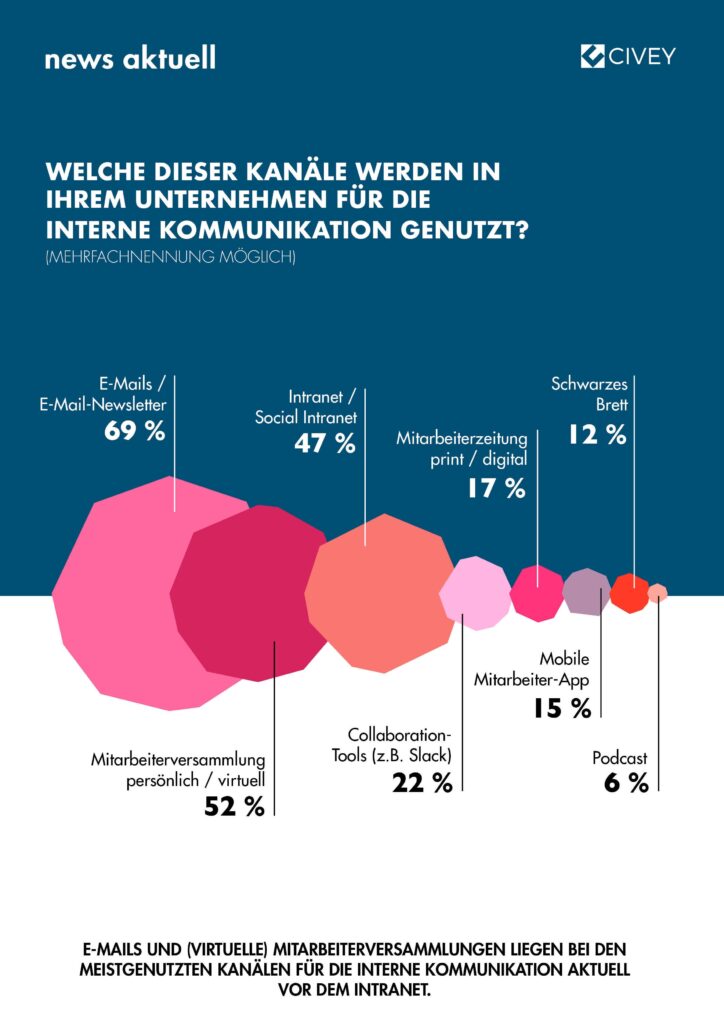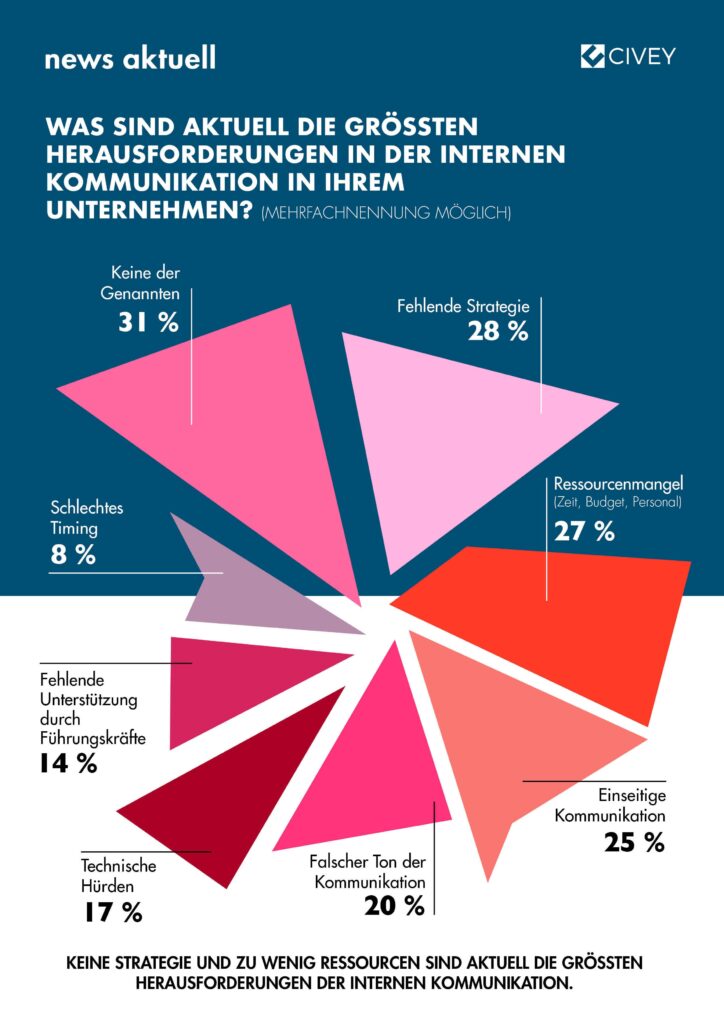There's still room for improvement: Four facts about internal communication
Internal communications are on the right track, but still have room for improvement: Every second communications professional gives in-house communications a good grade since the start of the pandemic, while every third gives it a poor grade, according to a survey by News Aktuell.

Most common channels: Intranet behind e-mails and staff meetings

Most common formats: Management updates and spontaneous virtual exchanges

Lack of strategy as the biggest challenge










